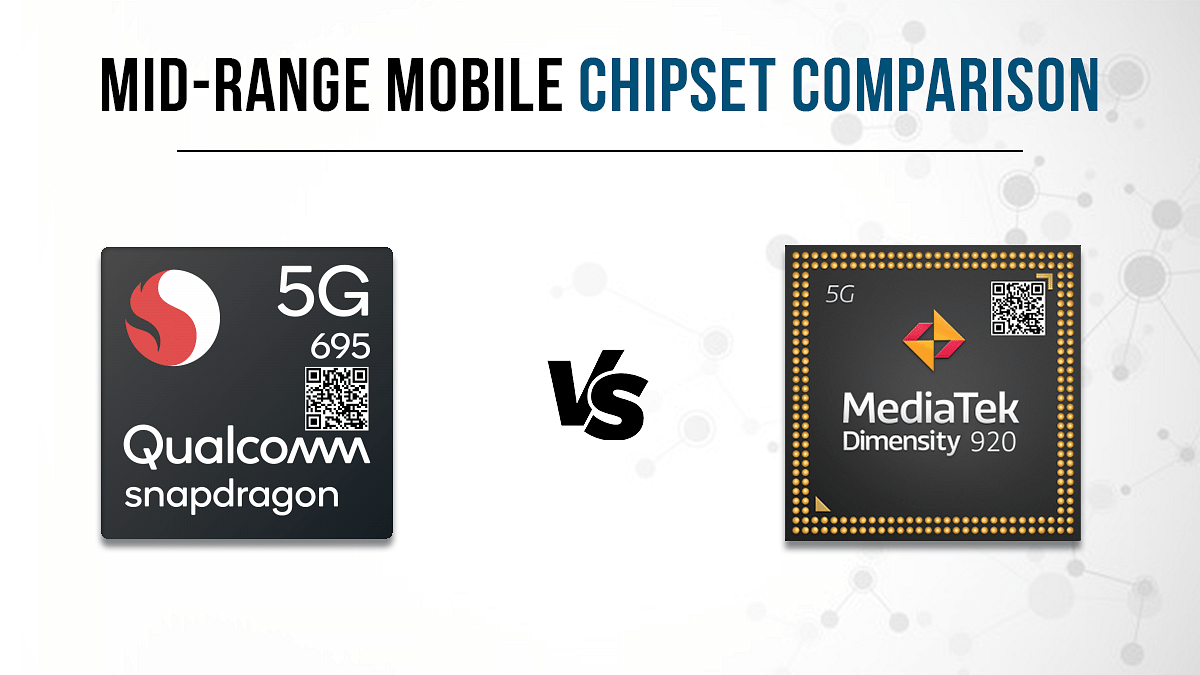Key Highlights
- The octa-core 5G Snapdragon 600 series processor is 5G enabled
- Realme unveiled its first-ever 5G tablet called the Realme Pad X 5G powered by the Snapdragon 695 processor
- Dimensity 920 is the finest bet in the mid-range mobile chipset department
Qualcomm Snapdragon 695 chipset is a new mobile processor that is driving the new-generation mid-range Android phones. The octa-core 5G Snapdragon 600 series processor is 5G enabled and is even being used with tablets. Realme recently unveiled its first-ever 5G tablet called the Realme Pad X 5G powered by the Snapdragon 695 processor. Several other competent handsets are integrated with this chipset for a powerful daily performance.
MediaTek, on the other hand, has the Dimensity 920 as its finest bet in the mid-range mobile chipset department. The Xiaomi 11i Hyper Charge, Redmi Note 11 Pro/ Pro Plus, and the Poco X4 (NFC) are a few of the popular handsets equipped with the octa-core Dimensity 920 chipset. This 5G processor is also well known for its powerful performance delivery. We have compared both of these popular mid-range chipsets in this article in terms of CPU, GPU, Memory, and Multimedia (ISP).
Qualcomm Snapdragon 695 Vs MediaTek Dimensity 920: CPU Comparison
Qualcomm and MediaTek both fabricated the Snapdragon 695 and the Dimensity 920 chipset using a 7nm fabrication process. The Qualcomm chipset has octa-cores including two Cortex-A78 cores clocked at 2.2GHz and six Cortex-A55 cores clocked at 1.7GHz. The Dimensity 920 is also an octa-core chipset that has the same two Cortex-A78 cores clocked at 2.2GHz and six Cortex-A55 cores clocked at 2GHz.
The Snapdragon 695 chipset is designed on the ARMv8.2-A Instruction set and has a frequency range of 2200MHz, while, the Dimensity processor also has the same Instruction set (ARMv8.2-A) and the frequency range, i.e., 2200MHz. Both these 5G chipset pack ample punch for multitasking and gaming.
Snapdragon 695 Vs Dimensity 920: GPU Comparison
The Qualcomm Snapdragon 695 chipset has the Adreno 619 GPU support which is designed on Adreno 600 architecture. The GPU delivers around 840MHz of frequency range and has 128 shading units. This processor has a 1.1 Vulkan version, 2.0 OpenCL version, and 12 DirectX version. On the other hand, the Dimensity 920 processor has the IMG BXM-8-256 GPU compatibility which is based on the PowerVR B-series chipset. The Vulkan, OpenCL, and DirectX version is the same as the Qualcomm processor. Similar to the CPU, the GPU performance is also similar on both these chipsets. They both are capable of easily rendering intense graphics with multimedia as well as gaming.
Also Read | Qualcomm Snapdragon 695 Vs MediaTek Dimensity 1300 5G Chipset: Quick Comparison

